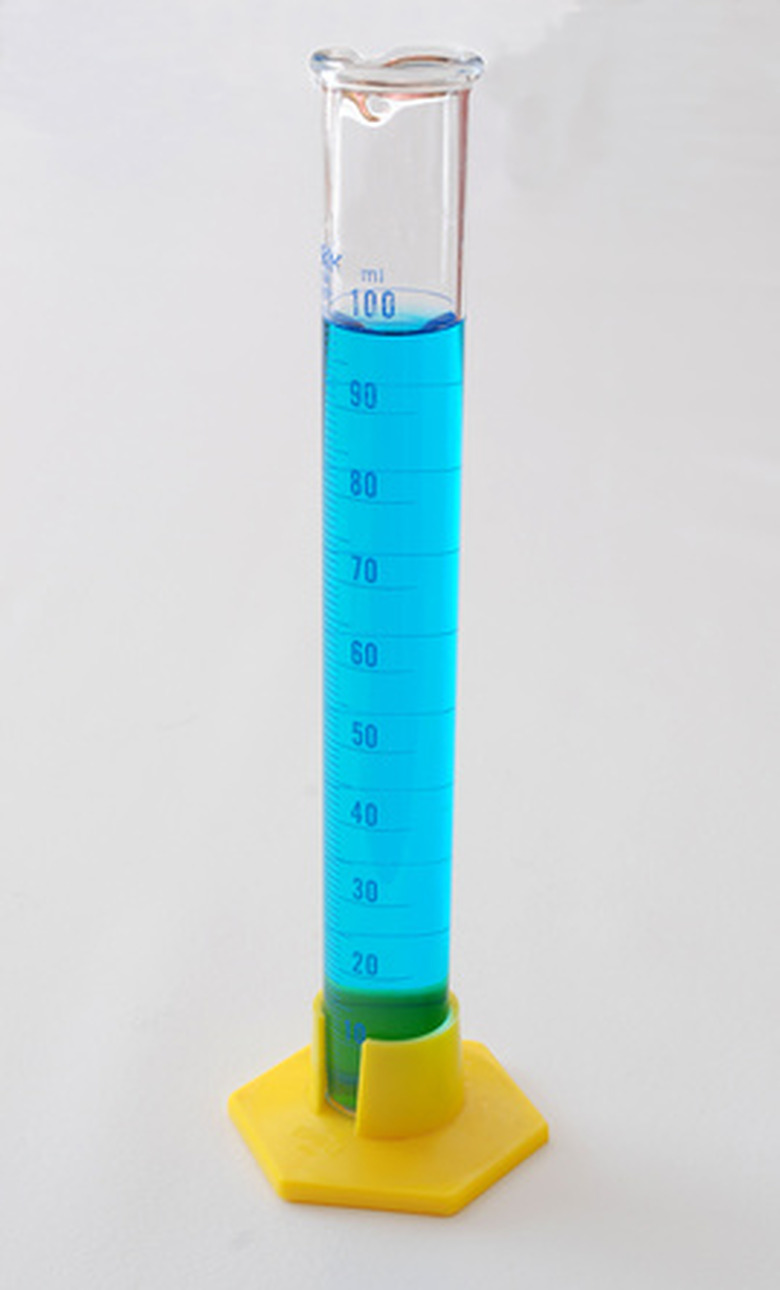How To Measure Iron In Water
While not toxic, the presence of iron in household water can lead to unpleasant odors, stained laundry, discolored water basins and even clogged pipes. However, these symptoms can also be caused by non-ferrous/ferric minerals. To measure the total amount of iron in water, you can use a color-changing test strip kit to detect the levels of iron ions in the water. The test strips are coated with the compound 2,2'-bipyridine, which forms a dark, highly visible complex molecule with the Fe(II). Prior to the test, ascorbic acid is added to the water sample, which reduces any Fe(III) ions in the water to a Fe(II) state.
Step 1
Use the pipette to transfer 10 milliliters of the water you want to test into the graduated cylinder.
Step 2
Add 1/4 teaspoon of ascorbic acid crystals to the water inside the graduated cylinder. Stir the water with the pipette to help dissolve the crystals.
Step 3
Dip an iron-testing strip into the water in the graduated cylinder, submerging it for about 1 second.
Step 4
Gently shake off any excess water and lay the test strip on a sterile dry surface and allow it to dry. After 10 seconds, the strip will have undergone its color change.
Step 5
Compare the color of the test strip to the different shades on the color chart included in the main test strip container. The number below the matching color square represents the concentration of iron ions in the water sample, in milligrams per liter (mg/L) or parts per million (ppm). The standard limit for iron in drinking water is 0.3 mg/L, which is very high but not dangerous. At this level, the water has a distinctly unpleasant taste, a bad odor and household appliances tend to become significantly stained with reddish or brown scale. Most household levels don't approach 0.3 mg/L, but it is not unheard of.
Things Needed
- Iron testing strips (2,2'-bipyridine based)
- Pipette
- 30-mL graduated cylinder
- 1/4 teaspoon ascorbic acid crystals
Cite This Article
MLA
Pasquesi, Andy. "How To Measure Iron In Water" sciencing.com, https://www.sciencing.com/measure-iron-water-6104560/. 24 April 2017.
APA
Pasquesi, Andy. (2017, April 24). How To Measure Iron In Water. sciencing.com. Retrieved from https://www.sciencing.com/measure-iron-water-6104560/
Chicago
Pasquesi, Andy. How To Measure Iron In Water last modified March 24, 2022. https://www.sciencing.com/measure-iron-water-6104560/
